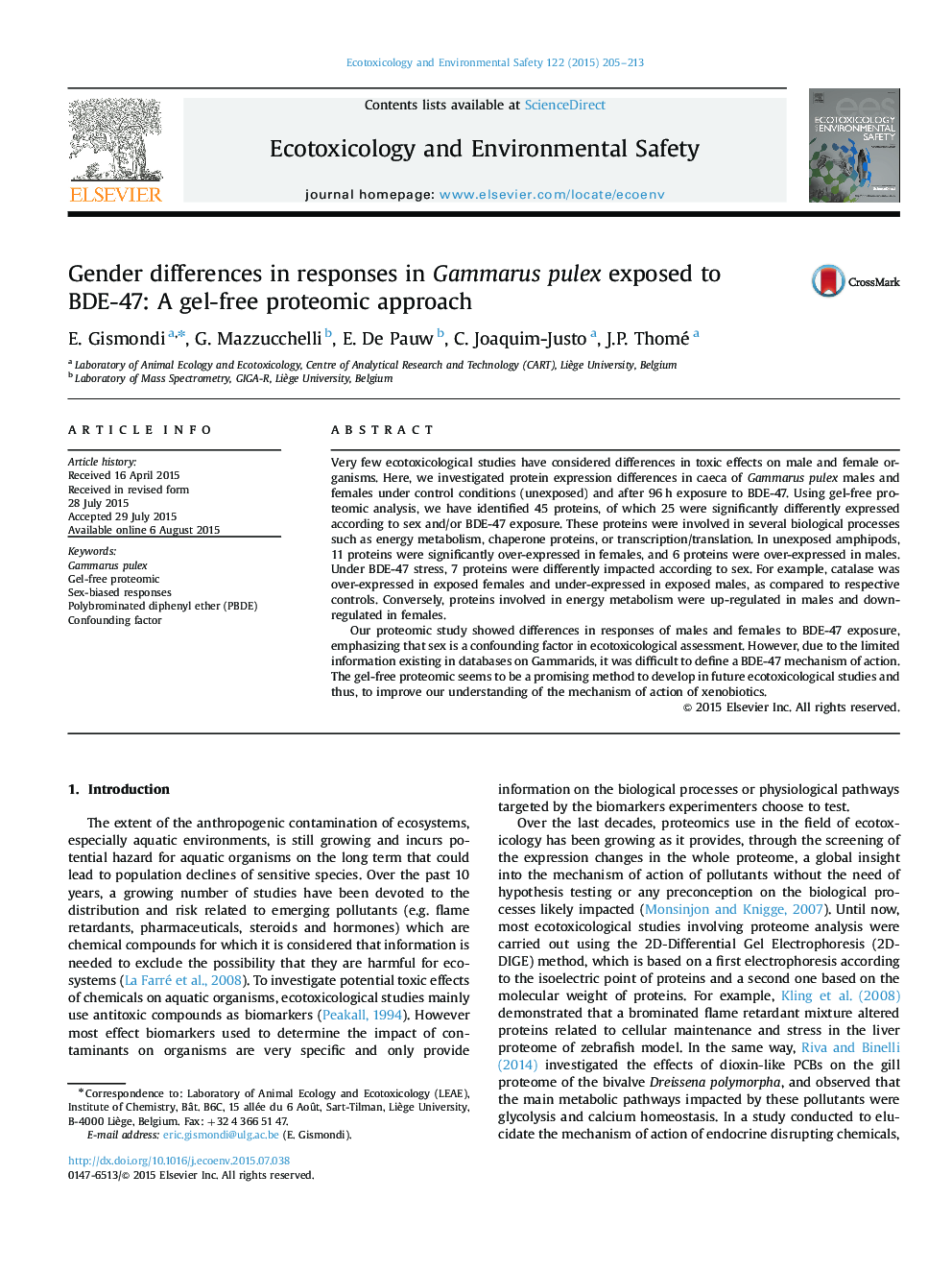| Article ID | Journal | Published Year | Pages | File Type |
|---|---|---|---|---|
| 4419522 | Ecotoxicology and Environmental Safety | 2015 | 9 Pages |
•Gender differences in protein expressions in BDE-47 exposed Gammarus pulex were found.•The gender differences after BDE-47 exposure suggest different defensive mechanisms.•Sex is a confounding factor in ecotoxicological assessments.
Very few ecotoxicological studies have considered differences in toxic effects on male and female organisms. Here, we investigated protein expression differences in caeca of Gammarus pulex males and females under control conditions (unexposed) and after 96 h exposure to BDE-47. Using gel-free proteomic analysis, we have identified 45 proteins, of which 25 were significantly differently expressed according to sex and/or BDE-47 exposure. These proteins were involved in several biological processes such as energy metabolism, chaperone proteins, or transcription/translation. In unexposed amphipods, 11 proteins were significantly over-expressed in females, and 6 proteins were over-expressed in males. Under BDE-47 stress, 7 proteins were differently impacted according to sex. For example, catalase was over-expressed in exposed females and under-expressed in exposed males, as compared to respective controls. Conversely, proteins involved in energy metabolism were up-regulated in males and down-regulated in females.Our proteomic study showed differences in responses of males and females to BDE-47 exposure, emphasizing that sex is a confounding factor in ecotoxicological assessment. However, due to the limited information existing in databases on Gammarids, it was difficult to define a BDE-47 mechanism of action. The gel-free proteomic seems to be a promising method to develop in future ecotoxicological studies and thus, to improve our understanding of the mechanism of action of xenobiotics.
